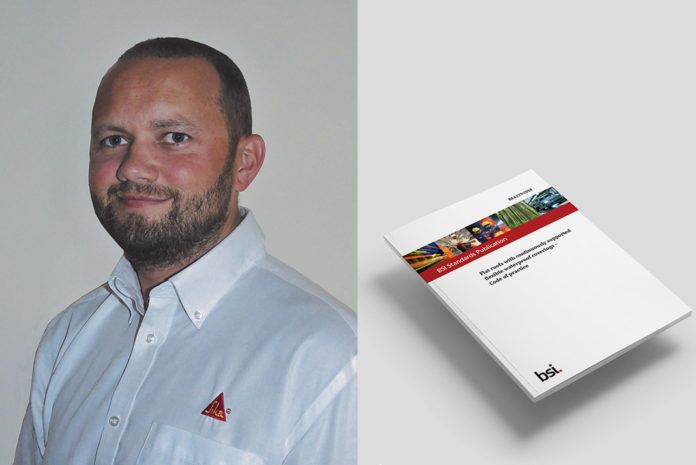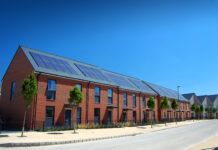By Martin Bidewell, head of technical and product management for Sika Roofing
The British Standards Institute (BSI) has published the BS 6229: 2018 – flat roofs with continuously supported flexible waterproof covering – code of practice.
The latest guidelines, which were published in November, contain a number of changes in relation to general good practice guidance, updated terminology and definitions for flat roofs.
These include an update of the previous definition for a “vapour control layer” to an “air and vapour control layer” (AVCL), as they perform two important functions. Changes now recommend avoiding the traditional cold roof construction, where the insulation is on the underside or cold side of the deck, due to the difficulty in forming an effective AVCL, cross ventilation and the subsequent increased risk of condensation. An additional “breather layer” is now shown over the insulation to provide an external air-leakage barrier and to help protect the insulation against any detrimental environmental factors.
More specific reference on the minimum design and finished falls in formed gutters and a new definition for “zero falls” (roof slope between 0 and 1:80 with no back falls or ponding) is also now included. A small relaxation to minimum upstand heights at door thresholds to balconies and terraces only is adopted (following NHBC guidance) to allow designers to meet the Building Regulations for level access. For all other abutments, the waterproofing should still be terminated a minimum of 150mm from the finished roof level.
Updated advice is available for the thermal design of inverted roofs, having now obtained improved practical experience of the actual performance of inverted roofs incorporating a water flow reducing layer (WFRL), designed to reduce the ‘cooling effect’ from rainwater. Interstitial condensation is covered in detail under its own standard, BS 5250, so has been removed from this standard. However, the updated code of practice does advise minimum thermal values for heated buildings (0.35W/m2K) are achieved at any point, to avoid surface condensation, all as per legislation guidance.
Although it is anticipated many of the above-mentioned amendments will take time to become established industry practice Martin Bidewell, Sika’s head of technical and product management, said those within the building sector should now be familiarising themselves with the code and following this updated guidance.
He said: “Manufacturers, specifiers and the like should be obtaining copies of the standard. People need to understand what the detailed changes are and the affect it might have on our buildings. From here on in, companies should be doing their utmost to ensure all new designs incorporate the latest recommendations.”
The code relating to flat roofs with continuously supported coverings was previously updated in 2003. Martin said the new guidelines provide more clarity for users. “The latest guidelines are more defined and help eliminate some of the grey areas that existed within the previous code,” he said. “The 2003 version really was an old standard, therefore the 2018 code brings it into line with the lat-est Building Regulations and other codes of practice. In my opinion, the latest guidelines are more streamlined and easier to understand, which can only be a good thing.”
“The guidelines are vital to successful flat roofing,” Martin added. “The standard sets out the basics of how to properly design a flat roof. There will always be instances when the guidelines cannot be adhered to completely, particularly when the project involves the refurbishment of an existing roof. However, there should be no excuse to ignore the code in new-build scenarios. The BS 6229 code of practice is the go-to flat-roofing document, and along with relevant trade association guidance, should form the minimum standards the industry is looking to achieve for every roofing project.”
For copies of BS 6229: 2018, visit: shop.bsigroup.com




